Charonia tritonis (Linnaeus, 1758)
Triton's trumpet
shell, 470mm
Charonia
tritonis is the
largest shelled gastropod in the Marshalls. Among shell-less gastropods, only
the Spanish Dancer nudibranch
Hexabranchus lacer seems to exceed it in length. Large
individuals are quite scarce but can be seen in various habitats throughout
the atoll, from shallow reefs to lagoon slope Halimeda patches to lagoon
pinnacles and the deep lagoon bottom. They also live along the seaward reef,
both on the top of and down the slope. One was spotted at Enewetak from the
submersible Makali'i deeper than 150m. Younger specimens like the one immediately
below can sometimes be found in seaward reef ledges and caves at night, where
they feed mostly on various kinds of starfish.
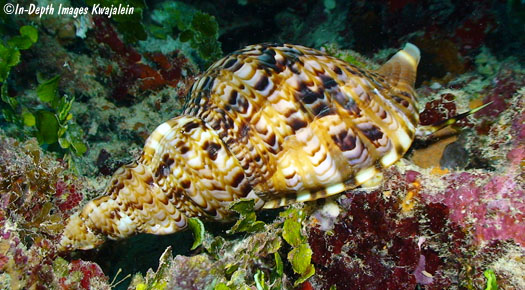
The one below is eating a young
cushion star, Culcita.
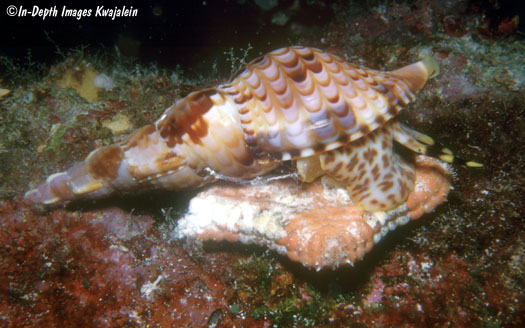
Here is a close view of the antennae of an individual in Hawaii. The left antenna
has a small black eye near the base.
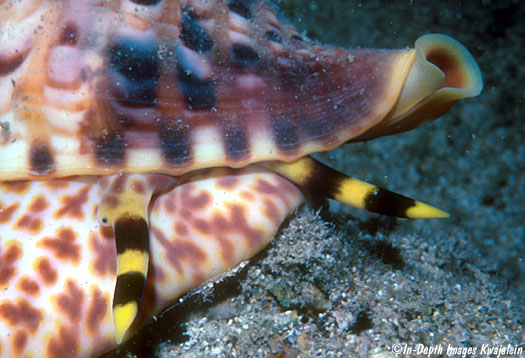
This one is showing some interest in the starfish Neoferdina cumingi.
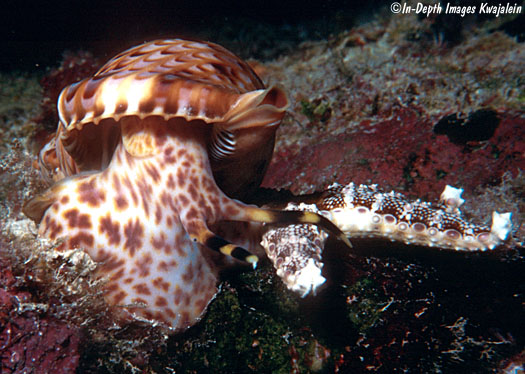
This rather old and crusty triton
was found eating a Linckia multifora starfish in Hawaii.
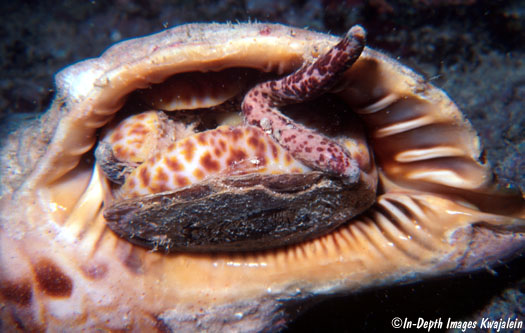
Below are three shots of tritons feeding on the crown-of-thorns starfish, Acanthaster
solaris. While I do not think it has ever been confirmed that predation
on these coral-eating starfish by tritons helps to limit starfish populations
and help protect the reef, it seems like it shouldn't hurt.
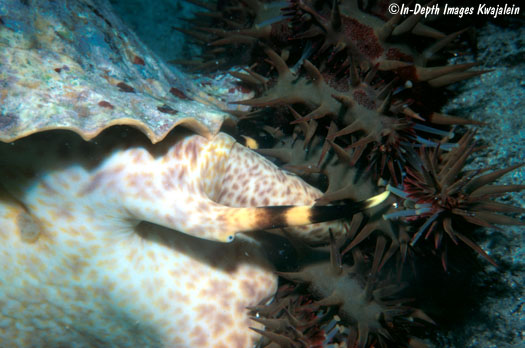
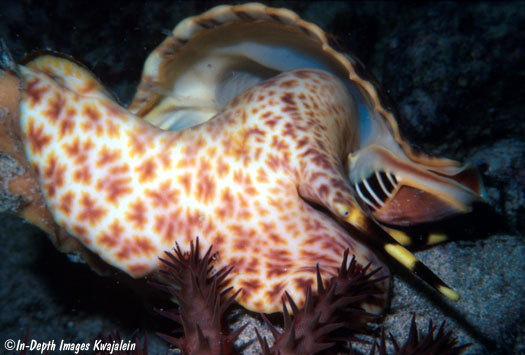
One day I ran across a crown-of-thorns
that was generating some mucus and appeared agitated. At first I could not see
why, but then spotted this 50mm long baby triton latched onto a starfish arm,
boring into it with its proboscis. He set his sights pretty high!
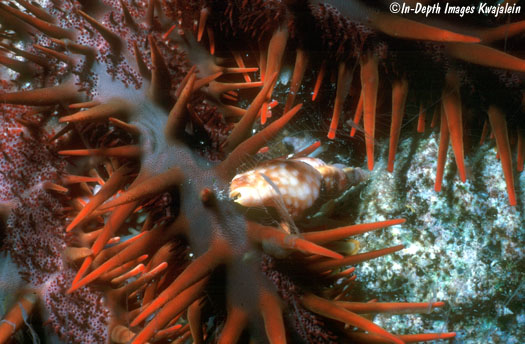
While starfish are the primary
diet for tritons, they will also eat some other echinoderms. Christina Sylvester
found and photographed this approximately 30cm shell obviously consuming an
Actinopyga
varians sea cucumber off Kwajalein Island.
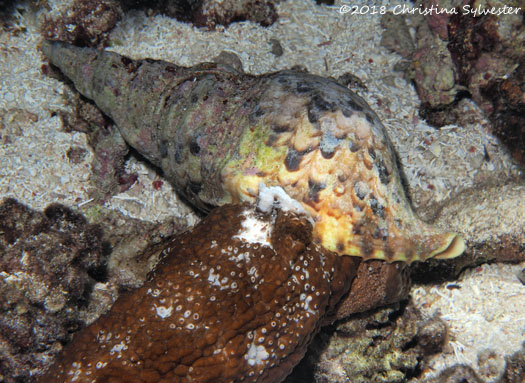
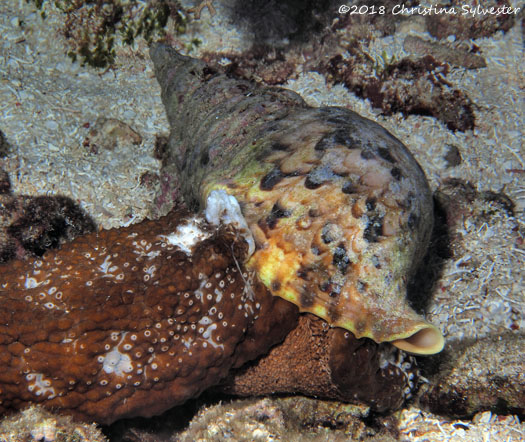
These two were in a small depression
between coralheads on the slope of a lagoon pinnacle. When first spotted, the
smaller one was clinging to the shell of the larger. When we came back for a
later look, the smaller one was completely under the larger. Possibly a small
male and larger female mating?
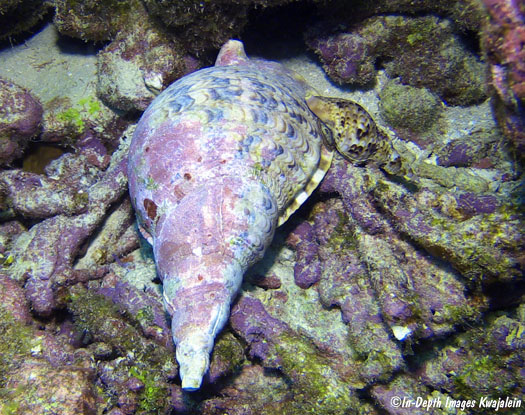
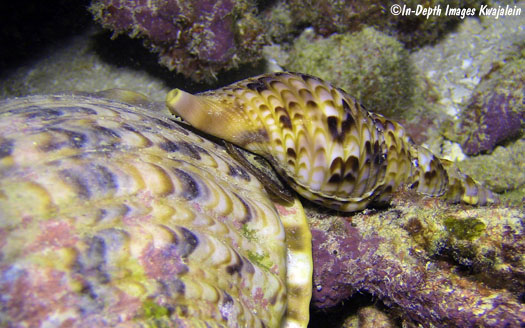
We see a fair number of young empty
specimens. It seems that this species is at most risk from natural predation
when they are young, so small ones are usually well hidden in holes and under
rocks. While one would think that large ones would be immune to most predators,
we have seen a couple of large tritons broken up into pieces. It must be something
mighty large and strong that is getting them. Nurse sharks and loggerhead turtles
are reported to eat the large queen conch (Strombus gigas) in the Caribbean,
so perhaps some of the large nurse sharks we see here can break up large tritons.
Although loggerhead turtles are found in all oceans, we know of no sightings
around the reefs of Kwajalein, where green and hawksbill turtles are common.
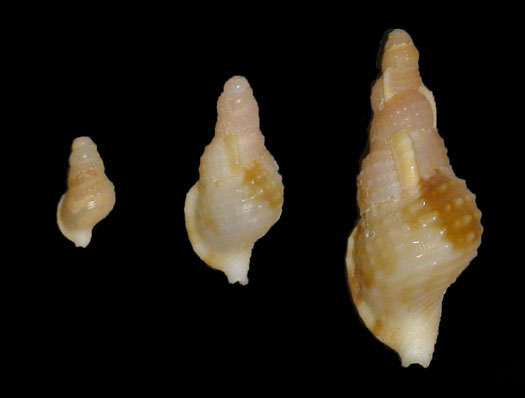
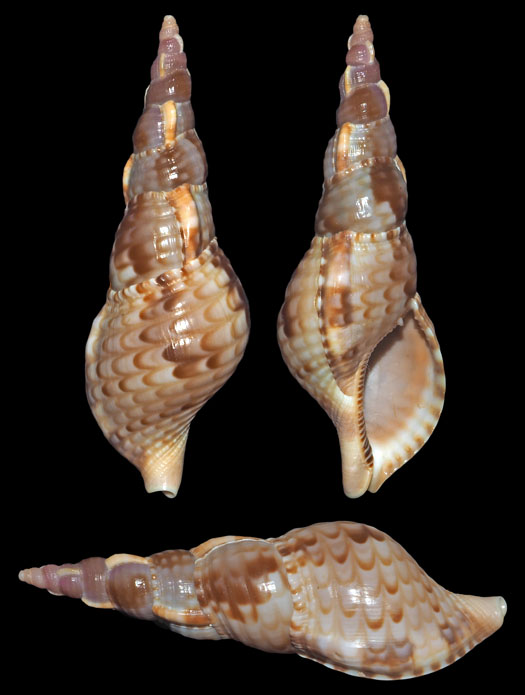
Created 5 August 2010
Updated 14 March 2020
Return
to triton list
Kwajalein Underwater home














